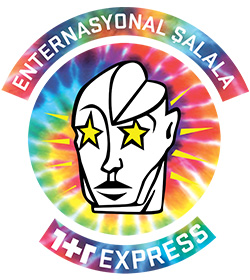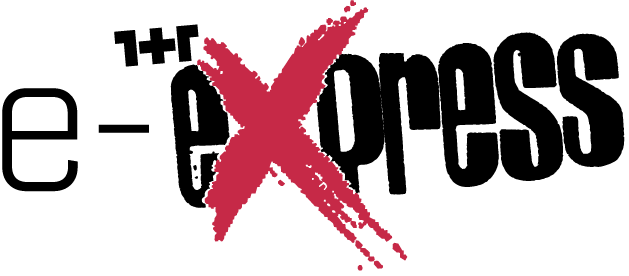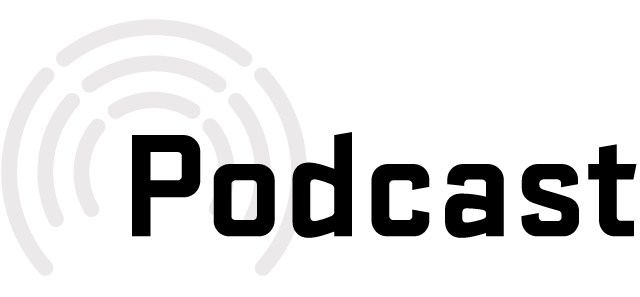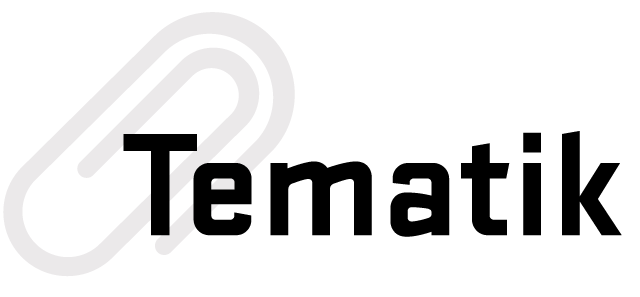Money does not have an eternal form of usage nor an essence. It is in fact a process shaped by social relations. Since the amount of money circulating in financial markets is way beyond the total amount of printed currency, it’s a necessity to ponder on the forms of the production and usage of money. It seems to be a good idea to begin with alternative monetary units. WIR, being the oldest alternative currency, deserves a close-up.

I could not, therefore, hope to destroy the social fictions in whole or in part. I would have to subjugate them. I would have to overcome them by subjugation, by rendering them powerless… I tried to see what was the first and most important of those social fictions. For that, more than any other, was the one I should try to render powerless. The most important, at least in our day and age, is money. How could I subjugate money, or to be more precise, the power and tyranny of money?
Fernando Pessoa, The Anarchist Banker
There is mainly one requirement for a group of people to start using a new currency: members of the group accepting to use that currency. The proliferation of alternative currency networks in Greece and Spain, after the 2008 crisis, showed how easy it is, in fact, to put new currencies in circulation. Alternative currencies spread rapidly especially during crises times. This is not only true for today, but also for the Great Depression after the 1929 crisis in Europe and the US.
Currently, there are about six thousand local, alternative currencies in circulation, spread and controlled in different ways. Despite examples such as Chiemgauer that is part of the local complementary currency in Germany (Regio Gelden) used for sixteen years, Banco Palmas used for fifteen years in Brazil, or Brixton Pound that contribute immensely to neighborhood economies in South London, the life spam of alternative currencies is usually pretty short. In this context, it will be a thought-provoking exercise to look at the story of WIR, used in Switzerland since 1934. First, let’s explore what “money” actually is and its power of making people “bow down” today.
Staggering transformation
There is only one point that political economists with diverse perspectives agree on about money: money causes a staggering social transformation when it is spread. Adam Smith perceived money that replaced traditional exchange relations and the personal ambition to own money as the main engine of social evolution.
The value of the printed currency in the world in 2017 equals to 36.8 trillion dollars. In the same period, the total value of the debt-credit documents (IOU) in derivatives market fluctuated between 550 trillion and 1.2 quadrillion. In short, the value of financial assets is at least fifteen times more than the value of all the printed currency.
Marx who observed the dissolution of traditional relations, wrote what happens to the wage labour that moves to the cities and how the capital reproduces itself, in his 1844 Manuscripts: “If money is the bond binding me to human life, binding society to me, linking me with nature and man, is not money the bond of all bonds? Is it not capable of dissolving and binding all ties? Hence, is it not also the universal agent of separation?”
Weber defined money as “the most abstract and impersonal element in human life”, while Georg Simmel, though hesitantly, gave it a revolutionary role. According to Simmel, the use of money triggered the ability of rational thinking and abstraction, which was the main factor in the transition from community to society. Money turned all social encounters into mathematical problems waiting to be solved. Development was inevitable as the problems are solved.
Yet, for Simmel, there was also something frightening about money: it demanded responsibility from the society. Human encounters could lose their uniqueness as they turned into mathematical problems, which would also turn money into a sacred goal in itself. Simmel, despite his optimism, was worried about a society that was concerned with accumulation on a daily basis, just like the “sacred petit bourgeois accountant Robinson Crusoe” of early capitalism. Only, this society would accumulate money, not bananas that actually have an expiration date.
Anthropologists Jonathan Parry and Maurice Bloch, known for their work on money and exchange relations in traditional societies, think that these views on the staggering effect of money are exaggerated on the level of being a “fetish”. However, it is vital to see the social transformation capacity of “money” whose borders are drawn by capitalism, and which is used in free market, turning land and housing into commodities, making the reproduction of capital possible and which, in fact, doesn’t have an ethical content.
It is also difficult to argue that Marx viewed money as essentially evil. He provides the commodity–money–commodity as the general formula for capital. Exchange value and capital accumulation stems from this formula. Today, widely used alternative currency systems partially disconnect the link between exchange items and value accumulation, hence, actualizing the commodity–money–commodity formula by keeping money in circulation.
Marx goes one step further in The Critique of the Gotha Program and argues in favor of distributing coupons to workers, in transitional communist societies, based on labour-time calculations. Taxes deducted from coupons would be spent for the necessary expenses of the society. Workers would get their products with the coupons, therefore, fulfilling their needs according to the commodity–money–commodity formula.
Alternative currency systems also try to increase the production and trade relations of the local businesses against the crippling of local production by monopoly capital and transnational corporations. This generates a local solidarity and increases the use of alternative currencies.
The age of financial money production
Marx left us an extensive body of work on the 19th century, when the state was the main authority in printing and circulating money. Today, the state’s authority over money is increasingly diminishing; fiat money is replaced with financial money and financial money production is dominated by a handful of financial organizations.
Today, you can come across people who are not necessarily interested in economics quoting the Oxfam report: “The wealth of the richest twenty-six people in the world is more than the income of 3.5 billion people, which is half of the poorest population in the world”. The rapid increase in income inequality since the 2008 crisis is indeed alarming. Yet, these calculations still speak from within the world of “fiat money”.
Financial money production makes it even harder to overcome this increasing inequality. It is estimated that the value of the printed currency in the world in 2017 equals to 36.8 trillion dollars. However, in the same period, the total value of the debt-credit documents (IOU) in derivatives market fluctuated between 550 trillion and 1.2 quadrillion. In short, the value of financial assets in the world is at least fifteen times more than the value of all the printed currency.

Jeremy Corbyn and financial Goliath
This difference increases as one approaches the finance capital centers. Let us think about Jeremy Corbyn and Labour Party’s economy program that envisions de-privatizing main sectors such as water, energy and education, doubling the number of cooperatives and autonomous organizations, and considering the universal basic income program as a real possibility in the future. It is not hard to foresee that, if this happens, financial organizations that grow by taking on debt from the future and through the commissions they get from digital mobility would do their best to block Corbyn’s way.
It is not hard to foresee that, financial organizations that grow by taking on debt from the future and through the commissions they get from digital mobility would do their best to block Corbyn’s way.
It is also not very likely that a few countries can come together to combat the financial Goliath. In this context, it becomes even more urgent to contemplate on alternative currency systems, even though their scope is currently limited. As the sociologist Viviana Zelizer argues, money doesn’t have an essence, and it is in fact a process shaped by social relations. And it is up to people to reshape this process.
Alternative currencies
Thanks to Bitcoin, the most well-known alternative currency type is “crypto money”. One of the reasons behind crypto money becoming a myth for some, is the mistrust to the authorities that control fiat money. Crypto money is designed by a “neutral” algorithm and is produced through digital “mining”, hence, it has a more ethical content that resists political corruption.
Bitcoin is blessed for its decentralist organization, its limited production that prevents inflation and debt relations and for being based on a trust relationship between users and programmers. Yet, crypto money such as Bitcoin, Freecoin, Litecoin is only used for exchange purposes on a global scale, as opposed to the “complementary” and “local” alternative currencies which are in touch with local production and employment relations.
Crypto money also serves capital accumulation since it’s limited and it operates within the flexible exchange regime, just like fiat money. Moreover, a serious technical investment is needed for its production. Hence, people who have more access to resources can have more crypto money, which weakens its “neutrality” claim. In fact, Bitcoin property rates reproduce the global income inequality. Marxist economist Andrea Fumagalli argues that crypto money can serve as an alternative only if it is in touch with labour power and production. Surely, this requires a significant political organization.
WIR is not a printed currency but a mutual credit system which records the product and service exchange among its members, based on trust relationship. For the WIR to be used, first fiat money needs to be killed.
Complementary currencies become part of the fiat money system in the contexts they are used, rather than attempting to replace it. Different complementary currencies might also have an exchange relation with each other. They allow the exchange of resources which are prevented from the market due to the scarcity of fiat money in the region. Alternative currency systems also try to increase the production and trade relations of the local businesses against the crippling of local production by monopoly capital and transnational corporations. This generates a local solidarity and increases the use of alternative currencies. Now, let’s look at the oldest complementary currency, WIR, which is in use for eighty-five years.
Wirtschaft Ring: WIR
WIR stands for “Economy Circle” and it also means “us” in German. It first began to be used in the German speaking cantons of Switzerland in 1930’s, put into circulation by two bankers inspired by the political economist Silvio Gesell. Gessel, in his book, The Natural Economic Order, theorizes the concept of “melting money” that would prevent the accumulation of money.
According to this theory, a form of currency that brings low interest income or no interest income can trigger exchange relations. When the cost of putting money or capital in stocks increases, money is directed towards product exchange. There are two ways in which money “scarcity” can arise. Firstly, “artificial scarcity”, which increases income inequality through speculative capital movement and fortifies monopoly capital. Secondly, “appropriate scarcity”, which gradually circulates the melting money by taking production and exchange relations into consideration. Interest rates that are below inflation allow money to stay in exchange processes.
Although WIR supports local production, it does not exactly aim for a transformation in alternative production and labour forms. Yet, we are responsible of developing utopian strategies in the age of financial money production.
It is important to note: Gesell’s “below inflation interest rates” does not correspond to Tayyip Erdogan’s interest “theory” since Erdogan’s low interest demand does not encourage local production but aims to perpetuate consumption, based on debt, in the age of financial money production. Gessel’s melting money, however, in political economist Guillaume Vallet’s words, needs “to die and to reborn” constantly.
Money that die and reborn
In 1934, during the Great Depression, “artificial scarcity” was strongly felt, banks did not provide credits to small and medium size enterprises (SME) due to the “consumption crisis” and capitalists stored their money in banks that offer high interest rates. WIR is not a printed currency but a mutual credit system which records the product and service exchange among its members, based on trust relationship.
For the WIR to be used, first fiat money needs to be killed. One WIR equals to one Swiss Franc (SF). There is a one-way exchange regime; SF can be converted to WIR but not the other way around. Let’s say, a flour factory decides to use WIR: some SF “dies” and some WIR is “born”. The factory has put the flour in the oven in WIR. Yet, there is no organization that can buy the bread in WIR, hence, some WIR “dies”. When the factory finds an organization that can buy the bread in WIR, some WIR is “reborn”.
New currency gets used more when there is enough WIR in exchange to fulfill the need for credit, based on accepted social values and trust relationship. In this way, WIR spreads in SME on a local scale and accelerates local economic exchange. WIR started with three thousand members in 1934 and has forty-five thousand SME partners now. This means, although there is yearly 1.5 billion WIR in circulation, it corresponds to product and service exchange that amounts to 50 billion SF.
Ideals and reality
WIR Cooperative, working as a “mutual credit cooperative” with no interest rate for years, turned into WIR Bank in 1998, subject to the Switzerland Bank Law, and started to operate as a deposit bank that provides SF credits. Yet, differing from deposit banks, it can put WIR money in circulation if needed, like an alternative central bank. SME members are obliged to invest SF and use some of it as WIR and if they meet their obligations, they become partners in two years. The bank charges near-zero interest rates for credits in WIR and has a very low processing fee.
In 2018, the WIR Bank declared 9.6 billion SF profit. Part of this profit has been distributed to partners and the other part is used for personnel expenses and the expansion of the WIR network. For some, WIR became a part of capitalism as it started to provide usual bank services. However, WIR Bank avoids investing into financial assets and use its savings in fields such as retirement, saving deposits and ecological energy. It prevents SME to shut down in times of crises by increasing employment. Hence, it still generates a feeling of security and solidarity for local communities, which turns WIR into a “living money”.
Modest beginnings for realist utopias
It would be naïve to assume that we can overthrow the financial Goliath with one successful example of a complementary currency. In addition, it cannot be denied that, behind WIR’s success, there is the fact that SF is among the most stable currencies. According to Andrew Fumagalli, WIR is “the representative of enlightened capitalism”. Guillaume Vallet defines it as a “complementary currency that balances capitalism”.
Although WIR supports local production, it does not exactly aim for a transformation in alternative production and labour forms. Yet, we are responsible of developing utopian strategies in the age of financial money production. Jordi Garcia Jané, solidarity economy theorist and Barcelona based L’Apòstrof Communication Cooperative member, imagines a world system based on four digital currencies, connected to each other through rates that are predetermined: 1. Complementary currencies of local governments, 2. Social currencies of local communities, 3. National currency used in an exchange regime that is controlled to prevent financial speculation, 4. “Terra”, an international currency whose value is determined based on a pool of main products, to replace the dollar.
This structure that can be built on solidarity economies and value of life sounds utopian perhaps. Yet, we should remember: the neoliberal dystopia we live in today was the utopia of a handful political economist eight years ago. It took a long time for their theories of value to become hegemonic. If money is a social relation rather than an entity with a fixed essence, it is up to us to redefine that relation for the benefit of humanity.
Translated by Aylin Kuryel





